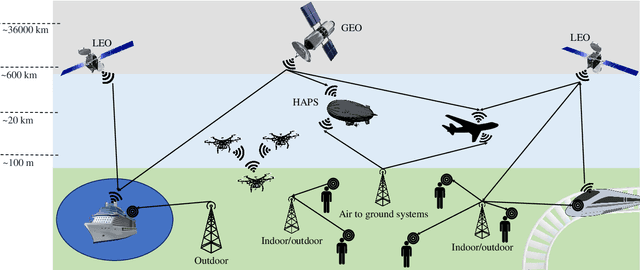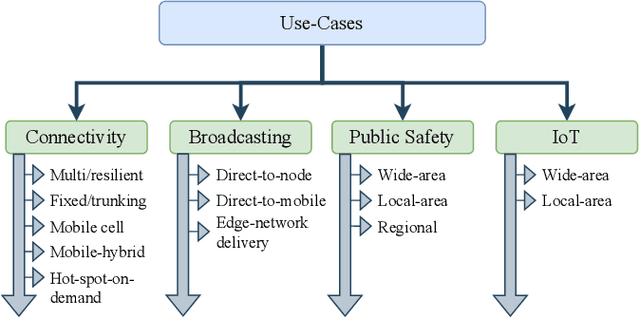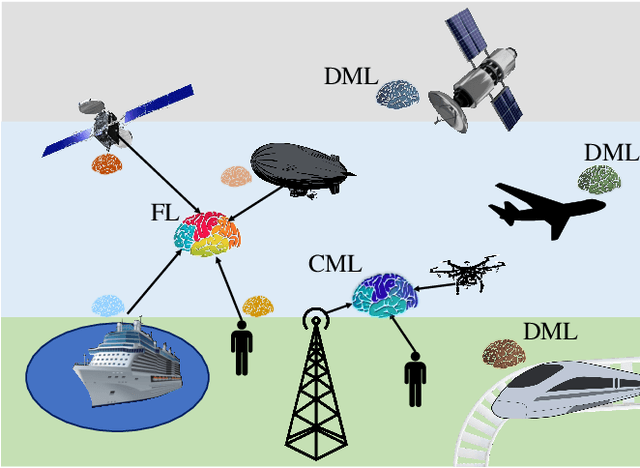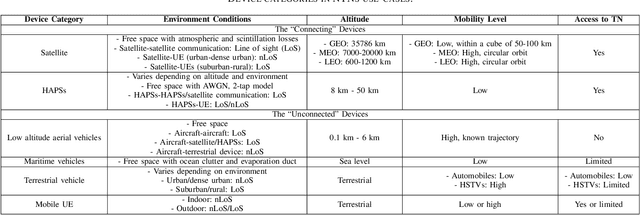Mehmet Izzet Saglam
Centralized and Decentralized ML-Enabled Integrated Terrestrial and Non-Terrestrial Networks
Jul 22, 2022



Abstract:Non-terrestrial networks (NTNs) are a critical enabler of the persistent connectivity vision of sixth-generation networks, as they can service areas where terrestrial infrastructure falls short. However, the integration of these networks with the terrestrial network is laden with obstacles. The dynamic nature of NTN communication scenarios and numerous variables render conventional model-based solutions computationally costly and impracticable for resource allocation, parameter optimization, and other problems. Machine learning (ML)-based solutions, thus, can perform a pivotal role due to their inherent ability to uncover the hidden patterns in time-varying, multi-dimensional data with superior performance and less complexity. Centralized ML (CML) and decentralized ML (DML), named so based on the distribution of the data and computational load, are two classes of ML that are being studied as solutions for the various complications of terrestrial and non-terrestrial networks (TNTN) integration. Both have their benefits and drawbacks under different circumstances, and it is integral to choose the appropriate ML approach for each TNTN integration issue. To this end, this paper goes over the TNTN integration architectures as given in the 3rd generation partnership project standard releases, proposing possible scenarios. Then, the capabilities and challenges of CML and DML are explored from the vantage point of these scenarios.
 Add to Chrome
Add to Chrome Add to Firefox
Add to Firefox Add to Edge
Add to Edge